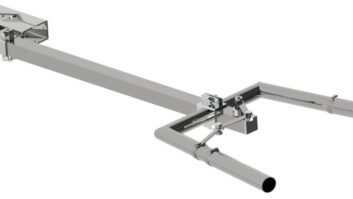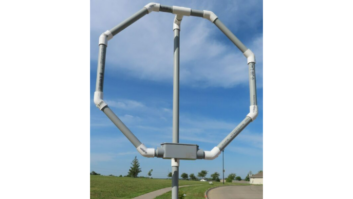There is a common element to every radio system, be it transmission or reception, and that is the antenna. But even though it is an essential system component, historically it’s been the least understood, especially on the transmitting end of things. Designs sometimes seem to have bordered on luck and black magic: “Get as much wire up as high as you can and tune for maximum current!”
I once took a course on antenna theory; the instructor, a college engineering professor, remarked that many antenna designs originated from persons such as him, who then left the explanation as to how they worked to grad students for thesis projects.

Back in the good old days, when the FCC was still issuing the coveted First Class Radio Telephone licenses, the exam question set (at least as I recall after a half century or so) only included one or two antenna theory-related questions that dealt with voltage and current distribution across a dipole element.
Truthfully, most of what little I know about antenna theory was not taught in the classroom but rather gleaned from digging through obscure and generally unavailable tomes or picking the brains of various consultants and operators more learned in such matters.
However, I don’t need to remind anyone in our industry that we are beginning to experience what will likely become an acute shortage of persons with RF knowledge and training (including antenna theory). There are fewer and fewer “senior operators” out there to share knowledge and answer questions in this area.
Where does one go to gain insight in this “darkest” area of radio?
ANTENNA BASICS FOR HAMS
An excellent bit of illumination recently appeared in the form of a 160-page book by a radio amateur who’s also an RF engineer, Robert J. Zavrel Jr., W7SX.
While the book may have be targeted to “hams” and was published by the world’s largest amateur radio association, it really belongs on the bookshelf of anyone in the broadcast engineering profession who cares to learn more about what happens to the RF current once it leaves the transmitter.
Driving this home is a chapter devoted to vertical radiators, an antenna design certainly well-known to the amateur radio community, but not deployed in large numbers by amateurs operating in HF spectrum due to height restrictions and the requirement for a fair amount of horizontal real estate in order to deploy the accompanying ground radials. Author Zavrel takes a deep dive into vertical theory, examining such items as the influence of soil conductivity on performance, electrically short verticals, multielement verticals (directional arrays), and more.
“Yagi-Uda” and cubical quad antennas get their own chapter, as do transmission lines, and there’s a “catch-all” chapter which includes loops, helicals, parabolic and corner reflectors and even traveling wave (Beverage) antennas.
To illustrate the timeliness of the book, there’s even mention of MIMO (multiple-input/multiple-output) system technology, which is arousing considerable interest due to the desire to pack more and more information transmission capability into the ever-decreasing mount of RF spectrum available.
In addition to treatment of such specialized designs, “Antenna Physics” provides a good grounding in basic antenna and transmission theory fundamentals such as antenna gain, radiation resistance, path losses, free space impedance, and much more. (Early on, the author includes a well-written section on Maxwell’s equations, fundamental in explaining the whole concept of radiation of energy across free space.)
Certain parts of Zavrel’s book may seem a bit intimidating if your math skills are slightly rusty. However, this is more than made up for by the inclusion of numerous pictures, tables and graphs, which help to explain this perhaps most mystifying area of radio.
Zavrel is aware that his readers may not all be on the same footing in terms of mathematical preparedness, as one of the appendices is titled “You Already Know Calculus,” in which he explains the power of this branch of math and the fact that it’s not really that difficult to grasp, even if you haven’t had a formal classroom immersion.
“Antenna Physics: An Introduction”
by Robert J. Zavrel Jr.
Published by the American Radio Relay League
ISBN: 978-1-62595-049-9
Price: $29.95
The book does not necessarily have to be read in a strictly linear fashion. I found myself reaching a certain point, putting it down for a while and then returning to explore a different topic.
Yes, there are other textbooks that provide contemporary information on antennas and antenna systems, but they typically have one thing in common: a big price tag. At $29.95, Zavrel’s “Antenna Physics: An Introduction” is a bargain, in terms of the cost versus the amount of knowledge offered. The book is available from the ARRL online bookstore and via Amazon, which offers an eBook edition for $9.99.
Regardless of the preferred format, if you’re interested about what happens to the RF going out the far end of your transmission line, you should have a copy.
James O’Neal is a contributor to Radio World and former technology editor of TV Technology.











